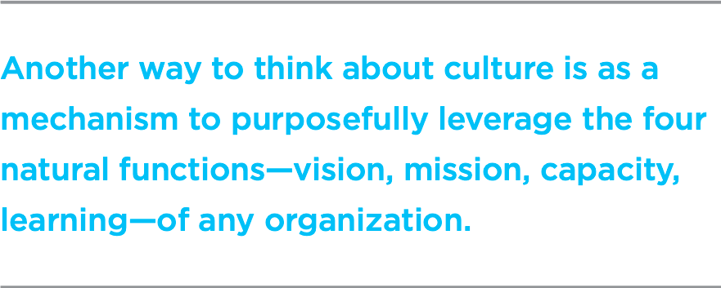Core Tenets of Organizational Culture
 Derek & Laura Cabrera
·
1 minute read
Derek & Laura Cabrera
·
1 minute read
This post is an excerpt from Chapter 6 of Flock Not Clock.
Members of your organization will share a large number of mental models, all of varying importance and centrality to the organization and its success. So what are the most important mental models—the pillars of your culture? Where do you focus first and foremost? Organizational success depends on sharing the right mental models, ones that are complexity-friendly and promote learning and adaptation.
The single most important mental model of any organization is its vision—the desired goal or future state the organization seeks (its raison d’être). CEO and author of Fueled by Failure, Jeremy Bloom, offers the following first step for creating a strong culture: “Establishing a culture you believe in means having a clear and consistent vision and knowing how you'd like everyone, inside and outside, to view the company.” Steve Howe of EY explained: “To improve its culture, a company must first define its purpose: why does it exist, and what greater good does it serve?” So the mental model you must first inculcate is your vision.
Inextricably linked to that is the mission—the steps you repeat to achieve the vision. We can’t emphasize enough how important it is for people to know what they must do and why they are doing it (that is, to what end)! As UK psychology professor Steve Taylor writes, “The need for purpose is one of the defining characteristics of human beings. Human beings crave purpose, and suffer serious psychological difficulties when we don’t have it. Purpose is a fundamental component of a fulfilling life.”

All capacity systems in your organization should be geared toward executing the mission (to achieve the vision); there should be shared understandings around capacity, as well. What does this entail? It is vital that every single member of your organization understands:
- The major capacity systems of the organization, including their purpose (to fulfill the mission to achieve the vision)
- How the systems fit together (align) to form a system of systems
- How he or she contributes to capacity (i.e., what her or his role is in the different capacity systems)
Finally, the learning function must also be enculturated, so that the organization’s mental models can be updated to reflect reality and facilitate adaptation to internal and external conditions and events.
.png?width=150&height=150&name=CRL%20GOAT%20Logo%20(4).png)



